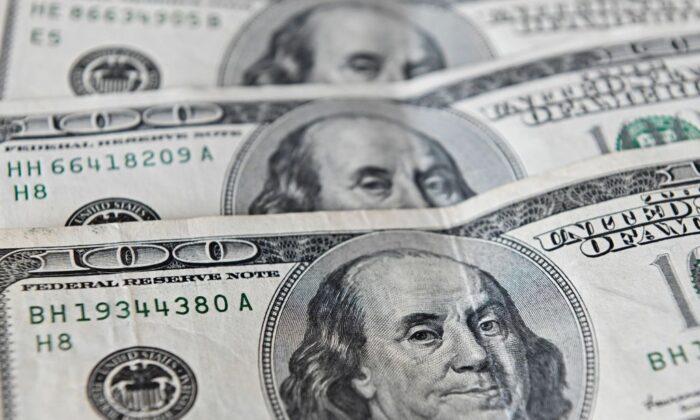After two quarters of decline earlier this year, the nation’s real gross domestic product (GDP) ticked up in the summer quarter. Political needs will point to the news in predictable ways, but practically speaking, the modest 2.6 percent annualized growth changes nothing in the underlying economic picture.
Things remain weak and on the verge of recession, if the economy isn’t already in one.
Since there’s some debate over the definition of recession, the matter can be put this way: If, as some contend, the two declining quarters earlier this year count as a recession, then the third quarter’s paltry real gain hardly says that the ordeal is over. The statistical picture of the quarter points to future declines. If, as others contend, the two down quarters don’t yet count as a proper recession, then the third quarter describes more of the already evident weakness and warns that recession is close.
This preliminary third-quarter growth figure looks positive enough to stand, even after the inevitable revisions made by the Commerce Department statisticians in November and December. The final figure may even be slightly higher. But whether the revisions edge up or down, the picture will remain one of weakness. Certainly, this range of growth looks poor enough compared with the almost 6.0 percent growth averaged over the four quarters of 2021.
It also shows an extension of the softening trend that started earlier in the year. With the third-quarter GDP 1.8 percent over levels of 2021’s third quarter, there’s quite an erosion from the 3.7 percent growth momentum real GDP showed as it entered 2022.

As usual, the American consumer is key. Consumer spending constitutes at least two-thirds of overall GDP. It rose at only a 1.4 percent annualized rate from the second to the third quarter. It is barely 2.0 percent above year-ago levels and shows a marked decline from the almost 5.0 percent growth momentum consumer spending had at the start of the year. More telling still is that only spending on services increased. Spending on goods declined at a 1.2 percent annual rate in the third quarter. Consumers begin cutbacks with spending on goods, as it takes longer to cut back on most service arrangements. Since after-tax income is hardly growing in real terms, it is hard to see any coming improvement in this trend.
Of course, steeply rising mortgage rates have precipitated a sharp decline in housing—what the Commerce Department statisticians refer to as “residential construction.” This measure fell at a 26.4 percent annual rate in the summer quarter—greatly exaggerating the slide that began earlier in the year, which produced a 3.1 percent annualized drop in the first quarter and a 17.8 percent drop in the second. Business investment in productive facilities and equipment also showed weakness, but nothing this extreme. It’s noteworthy that even spending on research and technology, which had increased at a robust 10.0 percent annualized rate on average during the first half of the year, rose at only a 6.9 percent rate during the third quarter.

Also indicating a soft economy is how the summer quarter’s GDP would have shown no growth at all were it not for the nation’s foreign account. Because the world economy faces shortages of food and energy, U.S. exports surged during the third quarter, rising at a 14.4 percent annual rate. Much of this increase was in petroleum products. This is a little strange, since domestic production cutbacks over the past year and a half have eliminated what was once a considerable American energy surplus. It would seem, then, that much of the reduction in the nation’s strategic petroleum reserve has gone overseas.
At the same time, the slowdown in consumer spending caused imports to drop at a 6.9 percent annualized rate. Because exports count as a positive in the GDP and imports count as a negative, the net of them contributed some 2.8 percent to overall real GDP growth. And since this figure is actually higher than the overall GDP growth estimate, it should be clear how weak the domestic economy really is.
This picture of continued weakness, if not outright decline, should set the tone for this last quarter of the year and at least the opening months of 2023. To be sure, a countertrend remains in still-strong hiring trends. Many in the media have even suggested that these contrary trends make this cycle unique. It’s not. The seeming countertrends are a function of the well-established lag between changes in activity and those in the labor market. As those lags work out, the labor market will show the weakness, and soon.





